Durga Puja is one of the most significant festivals celebrated in India, particularly in the eastern states of West Bengal, Assam, Tripura, and Odisha. It is a ten-day festival that honors the Hindu goddess Durga, who symbolizes strength, power, and the victory of good over evil.
The festival usually falls in the month of September or October and is celebrated with much zeal and enthusiasm. During this festival, devotees install beautifully crafted idols of Goddess Durga and worship her with great devotion.
The festival usually falls in the month of September or October and is celebrated with much zeal and enthusiasm. During this festival, devotees install beautifully crafted idols of Goddess Durga and worship her with great devotion.
The ten-day celebration is divided into three parts, the first three days, called Mahalaya, are dedicated to invoking the goddess, and the last five days, known as Saptami, Ashtami, Navami, and Dashami, are devoted to the worship of the goddess. On the tenth day, the idols of Goddess Durga are taken out in a procession and immersed in the river, symbolizing her departure to her husband's abode.
Durga Puja is not just a religious festival but also a cultural event that brings people together, regardless of their religion or caste. It is a time for family reunions, social gatherings, feasting, and merrymaking. Pandals, or temporary structures, are erected in different localities, where people gather to witness the beautifully crafted idols of Goddess Durga and enjoy the festive atmosphere.
Overall, Durga Puja is a festival that celebrates the triumph of good over evil, and it is an occasion for people to come together and celebrate their shared cultural heritage.
Durga puja date 2024
The dates for Durga Puja may vary slightly from year to year, as it is determined by the lunar calendar. The festival is usually celebrated in the month of September or October. In 2023, Durga Puja is expected to be celebrated from October 3rd to October 8th. However, the exact dates may vary depending on the lunar calendar and regional customs. It is best to check with the local authorities or religious organizations for the exact dates of Durga Puja in a particular region.Durga Puja ( দুর্গা পূজা ) is one of the most famous festivals celebrated in Bengali Hindu religions ( West Bengal, Bangladesh and particularly in Kolkata), in honour of Goddess Durga during the period of Navaratri. Durga Puja is also known as Durgotsava (দুর্গা উৎসব), Saratutsabh (শারদ উৎসব). It is celebrated for 10 days, however starting from the sixth day till the ninth day (Shashthi, Maha Saptami, Maha Ashtami, Maha Navami and Vijayadashami), the Pandals with grand idols of Goddess Durga are open for visitors.
Also Check- Latest Durga Puja Wallpaper, Facebook Cover Image
2024 Durga Puja Date
Durga Puja Schedule 2024 | ||
Name of Event | Day of Event | Date of Event |
Mahalaya | Wednesday | 2 October 2024 |
Maha Panchami | Tuesday | 8 October 2024 |
Maha Sasthi | Wednesday | 9 October 2024 |
Maha Saptami | Thursday | 10 October 2024 |
Maha Ashtami | Friday | 11 October 2024 |
Maha Nabami | Friday | 11 October 2024 |
Bijaya | Saturday | 12 October 2024 |
১৪৩১ বাংলা ক্যালেন্ডার অনুসারে-
| উৎসবের নাম | বার | তারিখ |
| মহালয়া | বুধবার | ১৫ আশ্বিন ১৪৩১ |
| মহা পঞ্চমী | মঙ্গলবার | ২১ আশ্বিন ১৪৩১ |
| মহা ষষ্ঠী | বুধবার | ২২ আশ্বিন ১৪৩১ |
| মহা সপ্তমী | বৃহস্পতিবার | ২৩ আশ্বিন ১৪৩১. |
| মহা অষ্টমী | শুক্রবার | ২৪ আশ্বিন ১৪৩১ |
| মহা নবমী | শুক্রবার | ২৪ আশ্বিন ১৪৩১ |
| মহা দশমী | শনিবার | ২৫ আশ্বিন ১৪৩১ |
Download PDF - 2024 Durga Puja Date & Time in India, 2024 Durga Puja Schedules- दुर्गा पूजा समय और तिथी
Importance of Durga puja
Durga Puja holds great significance in Indian culture and society, particularly in the eastern states of West Bengal, Assam, Tripura, and Odisha. Here are some of the key reasons why Durga Puja is important:- Religious Significance: Durga Puja is a religious festival that celebrates the victory of the goddess Durga over the demon Mahishasura. It is a time when devotees offer prayers, perform rituals, and seek blessings from the goddess. The festival is considered to be one of the most important festivals in the Hindu calendar.
- Cultural Significance: Durga Puja is not just a religious festival, but also a cultural event that reflects the rich cultural heritage of India. It is a time when people showcase their creativity through the creation of pandals and idols, and it is a time when people come together to celebrate their shared cultural identity.
- Social Significance: Durga Puja is a time when people forget their differences and come together to celebrate the festival. It is a time for family reunions, social gatherings, and merrymaking. People dress up in new clothes and visit pandals to enjoy the festive atmosphere.
- Economic Significance: Durga Puja is a significant economic event, particularly in West Bengal. It is a time when businesses thrive, and people spend money on buying new clothes, decorations, and food. The festival generates significant revenue for the local economy and provides employment opportunities for many people.
- Spiritual Significance: Durga Puja is a time when people seek the blessings of the goddess Durga. It is a time when people offer prayers and perform rituals to connect with the divine. It is believed that the festival brings peace, prosperity, and happiness to people's lives.
Overall, Durga Puja is an important festival that celebrates the victory of good over evil, brings people together, and has significant cultural, social, and economic significance. It is a time when people seek the blessings of the goddess Durga and celebrate their shared cultural identity
Significance of durga puja
Durga Puja holds significant cultural and religious importance in India, particularly in the eastern states of West Bengal, Assam, Tripura, and Odisha. Here are some of the key significance of Durga Puja:
- The victory of Good over Evil: The festival celebrates the victory of the goddess Durga over the demon Mahishasura, who was causing havoc on earth. It symbolizes the triumph of good over evil, and it reminds people that no matter how powerful evil might seem, it will ultimately be defeated.
- Welcoming the Mother Goddess: Durga Puja is a time when the goddess Durga is welcomed into people's homes and hearts. It is believed that during these ten days, the goddess visits the earth and blesses her devotees with health, wealth, and happiness.
- Cultural Unity: Durga Puja is a festival that brings people together, regardless of their religion, caste, or social status. It is a time when people forget their differences and come together to celebrate their shared cultural heritage.
- Social Gathering: Durga Puja is not just a religious festival, but also a social event that brings people together. It is a time for family reunions, feasting, and merrymaking. People dress up in new clothes and visit pandals, where they enjoy the festive atmosphere.
- Economic Importance: Durga Puja is a significant economic event, particularly in West Bengal. It is a time when businesses thrive, and people spend money on buying new clothes, decorations, and food. It is estimated that the festival generates significant revenue for the local economy.
Overall, Durga Puja is a festival that celebrates the victory of good over evil, brings people together, and has significant cultural and economic importance. It is a time when people welcome the mother goddess into their lives and seek her blessings.
Here are 150+ names of the goddess Durga:
Aditi, Adya, Amba, Annapurna, Arundhati, Bhadra, Bhairavi, Bhavani, Bhuvaneswari, Brahmani, Chandika, Chandi, Chitraganda,Dakshayani , Devi, Durga, Durgeshwari, Gayatri, Gouri, Gowri, Haimavati, Indira, Jagadamba,Jagdamba ,Jagdishwari ,Jaya, Jayanti, Jyoti, Kali, Kalika, Kamakshi, Kamalakshi, Kameshwari, Kanya,Kanyakumari ,Karali ,Kausiki ,Kavyanjali, Klimanthika, Krishnaa, Kumari, Lalita,Mahadevi, Mahagauri, Mahakali,Mahalakshmi, Mahamari, Mahasaraswati, Maheshwari, Mahishasuramardini, Maitreyi, Mangala, Matangi, Maya, Mookambika, Mukambika Nanda, Nandini, Narayani, Navadurga, Nitya, Omkari, Parvati, Pavaki, Purna, Ramaa,Renuka ,Rudrani , Saraswati, Sarvamangala, Sarvani,Sarveshwari , Satyavati, Shakambari, Shakti, Shambhavi, Shanthi, Sharda, Shatakshi, Shitala,Shivani , Shivatmika,Shobha ,Shrestha , Shri, Shridevi, Shrishti, Shuchismita, Siddhidatri,Sindhuja, Sita,Smriti ,Sridevi, Srishti,Subhadra, Subramanya,Subrata, Sudha,Suguna,Sulochana, Sumitra,,Sunanda, , Surupa, Swaha, Tara, Tarini, Tejaswini, Tripura, Tripura Bhairavi, Tripura Sundari,Trishna, Uma, Unnati, Upasana, Urmi, Usha, Vaishnavi, Vaishno Devi, Varada,Varalakshmi, Varuni, Veenapani,Vibha, Vidhya, Vijaya, Vikrami, Vilasini
Durga Puja Mahalaya
Mahalaya is observed seven days before the Durga Puja festival. It is a day of remembrance and invocation of the goddess Durga. On this day, people wake up early in the morning and listen to the recitation of Mahisasura Mardini, an audio program that narrates the story of the goddess Durga slaying the demon Mahisasura.The recitation of Mahisasura Mardini is a popular tradition in Bengal and is broadcasted on the radio, television, and through various online platforms. The program is narrated in a mesmerizing voice, accompanied by music and chants, and is a powerful invocation of the goddess Durga.
Mahalaya is considered an auspicious day, and people offer prayers and perform rituals to pay tribute to their ancestors. It is also believed that on this day, the goddess Durga descends to earth from her heavenly abode, and her journey is welcomed through various rituals and ceremonies.
Overall, Mahalaya is an important day in the Hindu calendar and is celebrated with great fervor in the eastern parts of India. It sets the tone for the ten-day Durga Puja festival and is a reminder of the power and glory of the goddess Durga.
Durga Panchami
Durga Panchami is the fifth day of the ten-day long Durga Puja festival, which is celebrated in India, particularly in the eastern states of West Bengal, Assam, and Odisha. It is an important day of worship and reverence for the goddess Durga, who is considered the embodiment of divine feminine power and strength.
On Durga Panchami, devotees perform various rituals and offer prayers to the goddess Durga, seeking her blessings and protection. The day starts with the recitation of mantras and prayers, followed by aarti and offerings of flowers, fruits, and sweets to the deity.
The highlight of Durga Panchami is the ritual of 'Kola Bou Snan,' which means 'bathing the banana tree.' A banana tree, which symbolizes the goddess Durga, is bathed and decorated with new clothes and ornaments. The tree is then placed beside the idol of the goddess, and it is believed that the goddess enters the tree, infusing it with her divine presence.
Apart from Kola Bou Snan, devotees also observe fasting and perform various other rituals, including the recitation of holy scriptures and hymns, and offering of 'bhog' or prasad to the goddess.
Durga Panchami is an auspicious day, and people celebrate it with great enthusiasm and fervor. It is a reminder of the power and glory of the goddess Durga and her ability to vanquish evil and restore order and righteousness.
Durga Sasthi
Durga Sasthi is the sixth day of the ten-day Durga Puja festival celebrated in India, especially in the eastern states of West Bengal, Assam, and Odisha. It marks the beginning of the actual worship of the goddess Durga, who is considered the embodiment of divine feminine power and strength. |
Durga Sasthi |
On Durga Sasthi, the idol of the goddess Durga is traditionally placed on a pedestal and consecrated with rituals and prayers. This ceremony is known as 'Pran Pratisthan,' and it signifies the invocation of the divine spirit into the idol.
The day is celebrated with great enthusiasm and devotion, and people offer prayers and perform various rituals to seek the blessings of the goddess Durga. Devotees also wear new clothes and offer 'bhog' or prasad to the deity, which is later distributed among the worshippers.
Apart from the religious ceremonies, Durga Sasthi is also a day of social gathering and cultural events. People come together to celebrate the festival, exchange greetings, and enjoy traditional food and music.
Durga Sasthi is an auspicious day, and people believe that the goddess Durga blesses her devotees with strength, courage, and prosperity. It is a reminder of the power and glory of the divine feminine and the triumph of good over evil.
Durga Saptami
Durga Saptami is a Hindu festival that is celebrated on the seventh day of the Navratri festival. Navratri is a nine-day festival that celebrates the victory of good over evil, and Durga Saptami marks the seventh day of this celebration.On this day, devotees of Goddess Durga worship her with great devotion and dedication. They perform various rituals and offer prayers to seek her blessings. It is believed that on this day, Goddess Durga killed the demon Mahishasura and saved the world from his atrocities.
People also observe fast on this day and break it with a special meal prepared with various grains and vegetables. In some parts of India, the festival is celebrated with great enthusiasm and people decorate their homes and streets with colorful lights and decorations.
Overall, Durga Saptami is a significant day for Hindus, and it is believed that observing this festival with devotion can bring good luck, prosperity, and happiness into one's life.
Durga Ashtami
Durga Ashtami, also known as Maha Ashtami, is the eighth day of the ten-day long Durga Puja festival celebrated in India, particularly in the eastern states of West Bengal, Assam, and Odisha. It is considered one of the most significant days of the festival and marks the peak of the celebrations. |
| Durga Ashtami |
On Durga Ashtami, people offer prayers and perform various rituals to seek the blessings of the goddess Durga. The day starts with the recitation of mantras and prayers, followed by aarti and offerings of flowers, fruits, and sweets to the deity.
The highlight of Durga Ashtami is the 'Astra Puja,' a ritual where the weapons of the goddess Durga are worshipped. The weapons, which symbolize her power and strength, are placed on a pedestal and consecrated with prayers and offerings.
Another important ritual that takes place on Durga Ashtami is the 'Kumari Puja,' where young girls are worshipped as the embodiment of the goddess Durga. It is believed that the goddess herself resides in these young girls, and people seek their blessings for strength and prosperity.
Apart from these rituals, devotees also observe fasting and perform various other rituals, including the recitation of holy scriptures and hymns, and offering of 'bhog' or prasad to the goddess.
Durga Ashtami is an auspicious day, and people celebrate it with great enthusiasm and devotion. It is believed that the goddess Durga blesses her devotees with strength, courage, and prosperity. It is a reminder of the power and glory of the divine feminine and the triumph of good over evil.
Durga Nabami
Durga Nabami is a significant day in the Hindu festival of Navratri, which is dedicated to the worship of the goddess Durga. It is celebrated on the ninth day of the Navratri festival, which falls on the ninth day of the Hindu month of Ashwin, which usually falls in September or October.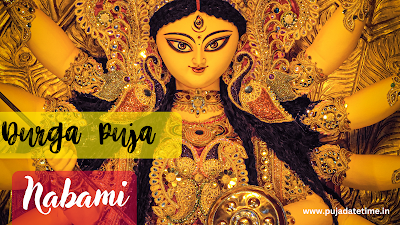 |
| Durga Nabami |
On Durga Nabami, devotees worship Goddess Durga with great devotion and offer her prayers and offerings. This day is considered very auspicious, and people believe that worshipping the goddess on this day can bring them good luck, prosperity, and happiness.
In some parts of India, Durga Nabami is celebrated as a day of victory of good over evil. The day is also known as Mahanavami or Navami, and it marks the end of the Navratri festival. On this day, many people also observe fasts and visit temples to seek blessings from the goddess. The festival is celebrated with great enthusiasm and devotion in different parts of India and is an important part of the Hindu culture and tradition.
In some parts of India, Durga Nabami is celebrated as a day of victory of good over evil. The day is also known as Mahanavami or Navami, and it marks the end of the Navratri festival. On this day, many people also observe fasts and visit temples to seek blessings from the goddess. The festival is celebrated with great enthusiasm and devotion in different parts of India and is an important part of the Hindu culture and tradition.
Durga Bijaya Dashami
Durga Bijaya Dashami, also known as Vijayadashami, is the tenth and final day of the Hindu festival of Navratri. It usually falls in September or October and marks the victory of good over evil.
On this day, people celebrate the triumph of Goddess Durga over the demon Mahishasura. It is believed that on this day, Lord Rama also defeated the demon king Ravana and rescued his wife, Sita. Thus, Durga Bijaya Dashami is also known as Dussehra, and it is celebrated with great enthusiasm and joy in different parts of India.
 |
| Durga Bijaya Dashami |
In some regions, people perform a special ritual called Vijayadashami puja, where they worship tools and instruments, including books, pens, and vehicles, as a way of expressing gratitude for the blessings of knowledge and protection they provide. People also exchange sweets and gifts, visit their friends and family, and participate in various cultural events and processions.
Overall, Durga Bijaya Dashami is a significant day in Hindu culture and tradition, symbolizing the triumph of good over evil and the power of faith and devotion.
FAQ:
Here are some frequently asked questions related to Durga Puja dates:
Q. When is Durga Puja celebrated?
Ans: Durga Puja is celebrated in the month of September or October, usually during the Hindu month of Ashwin.
Q. How is the date for Durga Puja determined?
Ans: The date for Durga Puja is determined by the lunar calendar. It falls on the sixth day of the bright half of the lunar month, known as Shashti, and ends on the tenth day, known as Vijayadashami.
Q. Is the date for Durga Puja the same every year?
Ans: No, the date for Durga Puja may vary slightly from year to year, as it is determined by the lunar calendar.
Q. Can the dates for Durga Puja vary by region?
Ans: Yes, the dates for Durga Puja may vary by region depending on local customs and traditions.
Q. How do I find out the dates for Durga Puja in my region?
Ans: You can check with local authorities or religious organizations to find out the dates for Durga Puja in your region. Additionally, many online calendars and resources can provide information on Durga Puja dates for different regions.
.
Download :

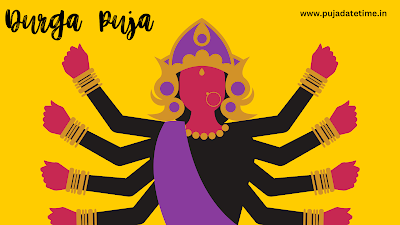



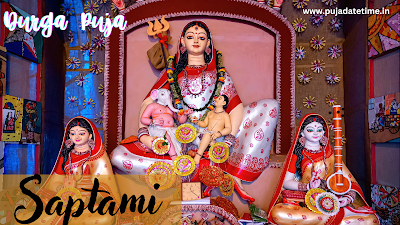

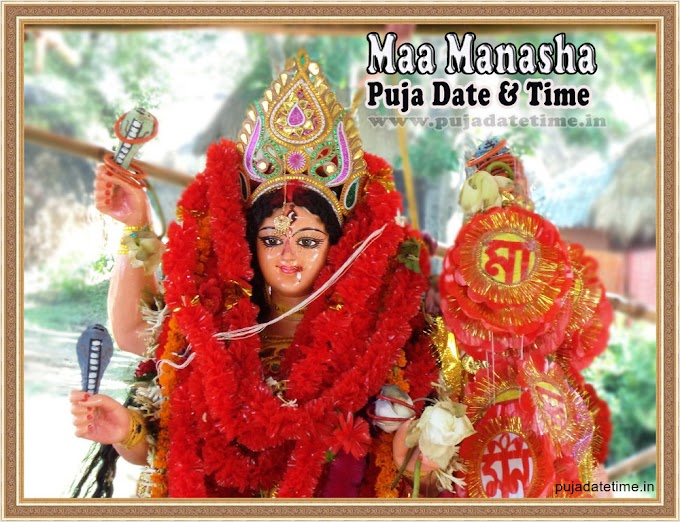
.jpg)



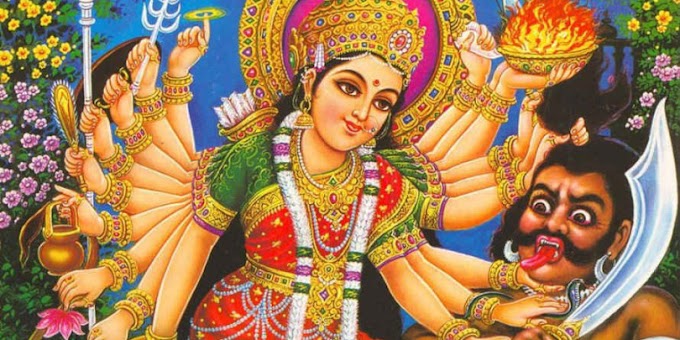
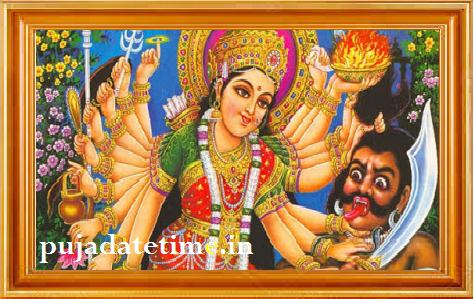
0 Comments